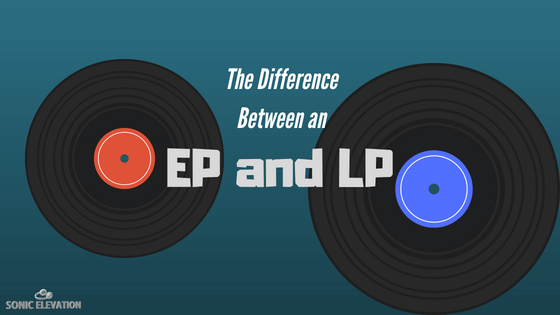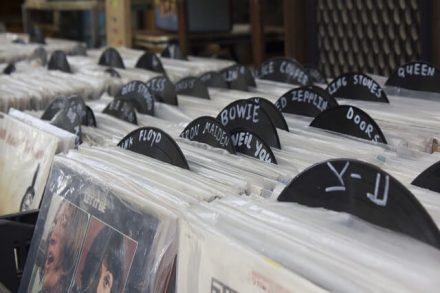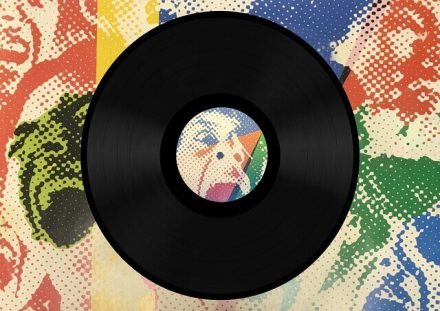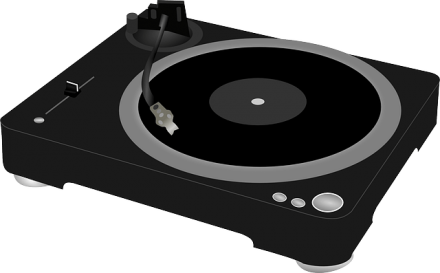
The Difference Between an EP and LP Explained
When you’re browsing the music section of iTunes, Amazon Music, Tidal Music, Spotify, or one of the few remaining record stores – you’ll sometimes see either “EP” or “LP” after the title.
The difference between an EP and LP is less confusing than you might think. In an era where most people use one of the popular streaming services to consume the latest album from their favorite artists, music can start to seem like an intangible collection of data and nothing else.
This is one example of why knowing the difference between the two can help you remember (if you don’t already) that great music is literally a piece of the artist’s soul.
Even though we can access millions of songs instantaneously, most music is created by other humans that have a talent and/or knack for expressing emotions we can relate to. (There are a few tracks out there that AI may have had a hand in, but that’s a topic for another time.)
We’ll do our best to give you everything you need to know about both types of releases, some important background information, and a few bonus tidbits you’ll enjoy. After reading through our guide, you’ll be able to explain the difference to your friends, or anyone who’s wondering the same thing!
Keep reading to see an in-depth explanation of both classifications and why knowing what the difference is matters (for reasons other than brushing up on your music knowledge).
Difference Between an EP and LP

What’s Does “EP” Stand For?
“EP” stands for “Extended Play”. At the core, that’s the shortest and most basic explanation anyone can give. EPs are usually longer than a 3-minute song, but shorter than a full-length album that has a longer run time.
Sometimes a band or artist will release an EP as a teaser for their upcoming album. With the hope that the mini appetizer will hold the fans over long enough that they won’t start to lose interest (or until the full-length release is ready).
At The Inception Of Extended Plays
At their inception, extended plays were pressed on 78 RPM discs. Around 1949, the 7″ 78 RPM discs could still only hold a maximum of few minutes on each side.
Today, when you’re browsing through the music service that you use, most EPs have anywhere from 3 to 5 songs. Their run time is usually under 30 minutes. Some fans argue that it’s hard to call a collection of 3 songs an extended play. They’re of the opinion that it’s just a few singles thrown together and released at the same time, which is definitely debatable.
Split EPs
Another less-common practice is when two bands get together and decide to release something called a “split“.
In this case, each band will contribute 2 songs each and release it under the same title. Sometimes the title will also be split into 2 parts. It seems to be more popular in certain genres and a lot of underground indie/metal-related bands regularly team up for a joint release. Here’s an example of a split from Alexisonfire and Moneen.
Most of the time a split’s run time is pretty short but sometimes you’ll get a full-length split that runs around an hour altogether.
Short and Sweet
Either way, you put it, an extended play is a few songs that serve as a preview or interlude in between albums (and sometimes introduction). When you read or hear someone say “EP” – think short and sweet.
What Does “LP” Stand For?
“LP” stands for “Long Play” and is used to describe a full-length album. Technically, the term is used for labeling vinyl records that have a playtime of over 45 minutes. Although that was the original maximum playtime when the 12″ was first introduced, the playtime per side will vary depending on the size and speed of the record (33 1/3, 45, or 78 RPM).

Modern Day Examples
Today, most LPs are pressed on 12″ 33 1/3 RPM vinyl. Nowadays, the term isn’t only exclusive to vinyl. Some artists use the label in their album titles. For example:
– The Marshall Mathers LP by Eminem
Whether you bought the album on vinyl, cassette tape, CD, or a digital copy – the title was still the same. It’s hard to say for sure why Eminem chose to include the classification in the album title. This is pure speculation but it seems like a creative choice that he’s only used on a few of his records.
Most albums don’t include the long play abbreviation after their album title. You’ll usually see it placed after the title when you’re browsing actual vinyl records.
What’s The Main Takeaway?
Unless you’re thinking about starting a vinyl collection, here’s the main takeaway to remember:
LP stands for long play and is used to identify a full-length album that usually has a playtime of over 45 minutes. If you have been thinking about starting a record collection, it’s more important that you keep the factors of size and speed in mind.
Are There Any Similarities?
Although the differences should be pretty obvious by now, there are a few similarities between these two types of releases. Technically speaking, both extended play and long play are used to describe vinyl releases. In the digital age, the terms can be used to identify how much time you’ll need to set aside for an all-the-way-through listening session.
For vinyl, it lets you know how long you can expect the body of work to be and the speed that it’ll play at on your turntable. Most turntables will play 33 1/3 and 45 RPM by default.
Some turntables (like the Ion Audio Max LP) have a speed adapter built-in that allows you to flip a switch and change speeds. Others only play 33 or 45 RPM and require an additional adapter to play 78 RPM.

If you collect vinyl (or you’re interested in starting) it’s important to keep in mind that most records aren’t pressed on 78 RPM discs. When you search online at Amazon or other online retailers, the speed will be in the description.
Can You Explain The Difference?
Now that you’ve read through our guide, could you explain the difference between an EP and LP if a friend asked you to? To sum it all up in one sentence, an extended play is a few songs with short run time and a long play is a full-length release with longer run time.
Hopefully, any confusion you had before stumbling upon our post was cleared up. If you know anyone else who’s curious about the subject, share this link with them so they can also become more enlightened.
Thanks for stopping by and reading our guide! If you’re still hungry for more information don’t leave yet! Stick around and check out one of the related links below.
Other Related Posts You’ll Enjoy
If this guide has piqued your interest in learning more about vinyl, take a look at some of our other vinyl-related posts. Thanks again, we hope to see you here again!
Sonic Elevation: Ride The Waves.
- Korg B2 vs Roland FP10 | Which One To Buy - May 13, 2021
- How Does Music Affect The Brain? – Let’s Find Out! - April 6, 2021
- Why Are My Headphones Crackling? – How To Fix It - April 3, 2021
This is quite an interesting article. The ones who are deeply interested with the music scene can know what these terms are, but I spot that many people don’t actually know what these are about.
I didn’t know about the timing details of LP’s and EP’s. I have learned many great things from your article!!
I agree Tyler, it seems to be pretty common knowledge within the hard core music fans, but not so much for the casual audience.
Although it does make a pretty major difference when it comes to buying actual vinyl records, it becomes a little bit more blurry in the digital age. Fans are becoming conditioned to expecting a lone single randomly thrown at them, instead of a full body of work.
Thanks for bringing that up, the run time and number of tracks are 2 of the most distinct differences between an EP and LP.
Since most people consume music as it’s stored as an MP3, WAV, or FLAC – the need to pay extra attention to the run time differences between an EP and LP pretty much exclusively apply to listening on vinyl.
In that case, it will have an effect of pricing, the speed at which it plays on your turntable, and total run time as well.
In the case of digital files, unless you manually alter the speed – it will play at the same exact rate across multiple types of players.
Thanks for tuning in Tyler. 🙂